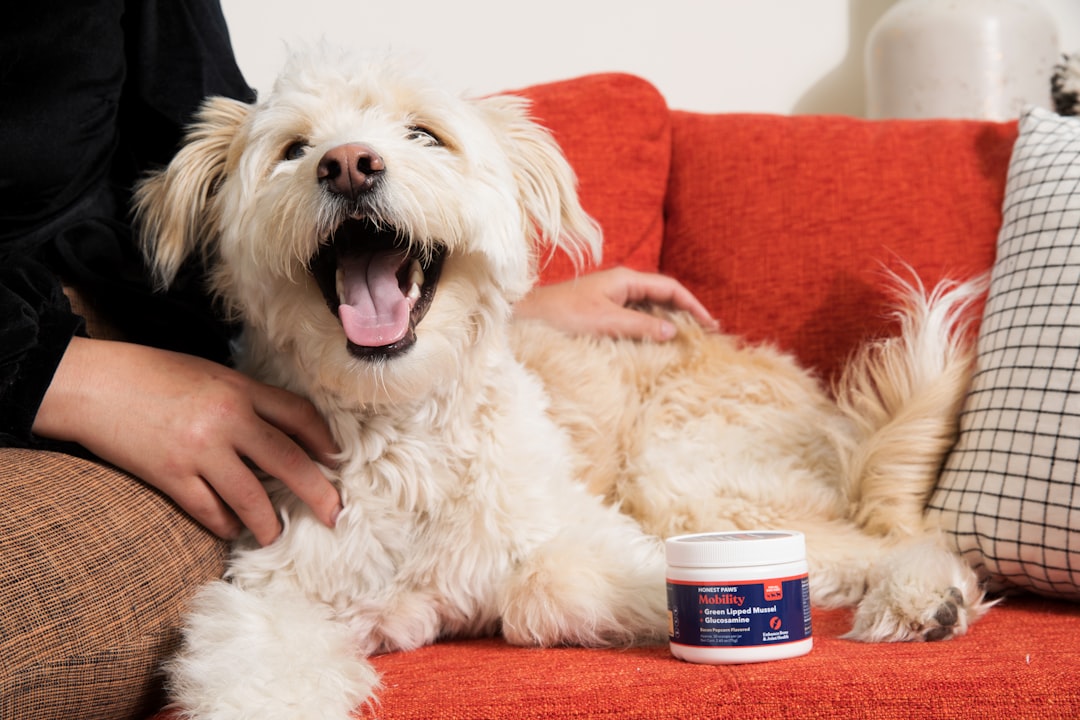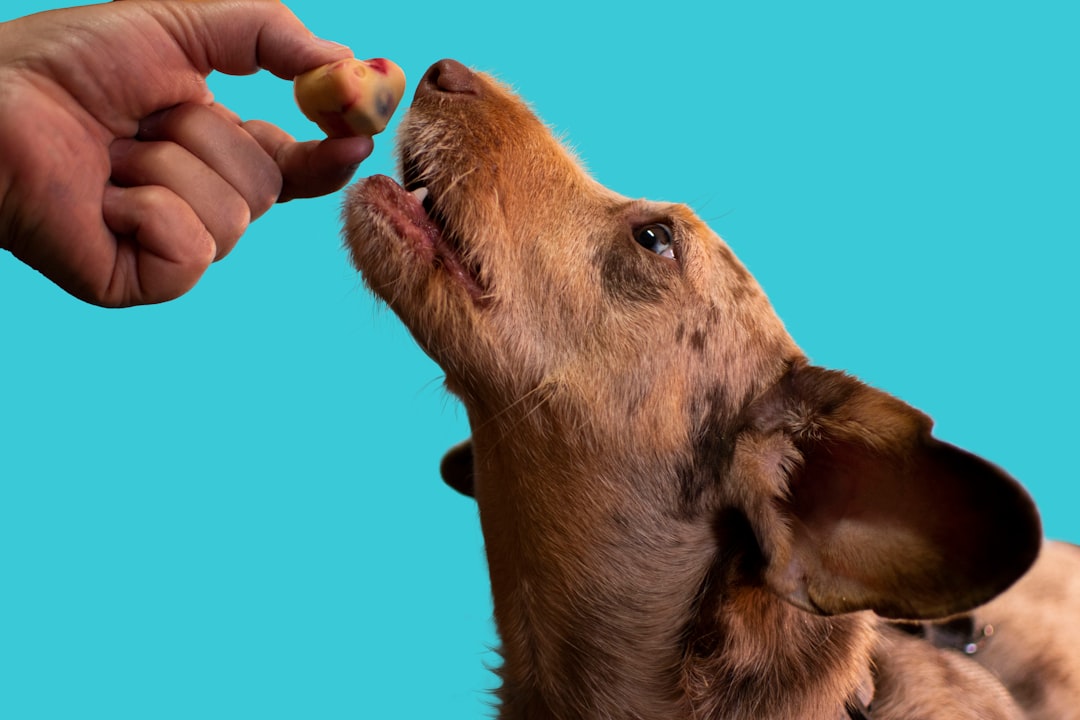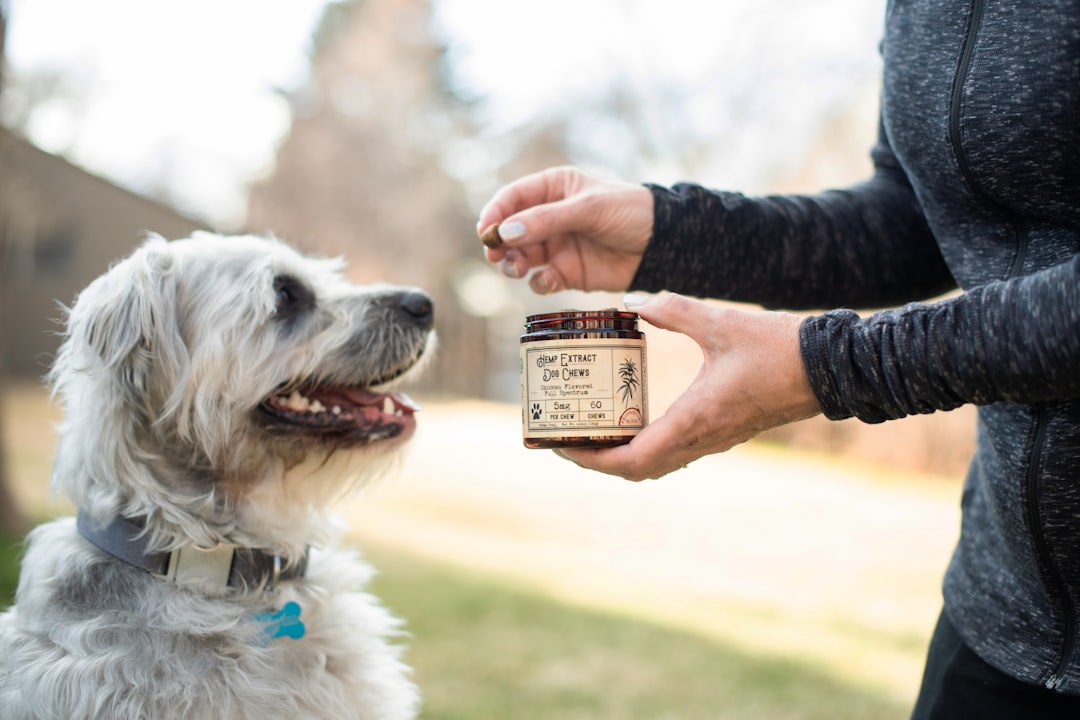

Engage prospects with a scan and streamline customer engagement with FREE QR code marketing tools by Sona – no strings attached!
Create a Free QR CodeFree consultation

No commitment

Engage prospects with a scan and streamline customer engagement with FREE QR code marketing tools by Sona – no strings attached!
Create a Free QR CodeFree consultation

No commitment
Dog treat brands are grappling with pet owners' rising expectations for premium ingredients, transparent sourcing, and digital product access. Without effective tools to communicate real-time nutrition and safety details, brands risk missing high-value consumers who want more than static packaging provides. Outdated collateral and generic messaging often leave marketers unable to identify or nurture the best prospects, resulting in missed opportunities to demonstrate trust and drive loyalty.
QR codes in marketing are quickly closing this gap by connecting physical products to interactive digital experiences. For dog treat brands, QR codes allow consumers to instantly access ingredient breakdowns, certification verifications, reviews, and training resources, meeting the demand for transparency and convenience. These engagements shape brand perceptions and enable a brand to understand who is interacting and what specific content resonates, even when those visitors would otherwise remain anonymous. Learn how to reveal these insights with account identification.
By incorporating QR codes into product packaging, displays, and marketing materials, dog treat brands can consistently deliver dynamic, personalized product education and keep pace with packaging trends. Scan data informs follow-ups and audience segmentation, supporting consumer trust, relevant engagement, and operational flexibility through every phase of the customer journey.

Many dog treat brands struggle to keep consumers educated due to the static nature of printed materials and a lack of real-time audience insights. Front-of-pack panels are crowded, inserts are expensive to refresh, and in-store conversations rarely capture everything a pet parent wants to know. When the questions involve allergens, sourcing, or batch-level quality information, static print becomes a bottleneck that can stall confidence and conversion. As a result, high-interest prospects may leave the aisle without clarity, and strong-fit shoppers remain anonymous in the data.
QR codes turn that challenge into an advantage. A single scan can serve ingredient transparency at depth, provide sourcing maps and certifications, offer training content that increases product utility, and capture zero-party data through forms or Google Forms QR codes. The same code can be updated in real time to reflect recipe improvements, limited-batch drops, or urgent safety notices. Brands replace outdated brochures, paper sign-up sheets, and generic shelf-talkers with actionable, measurable touchpoints that build trust and inform smarter follow-ups.
Modern tools make this process accessible and scalable. Sona QR supports device-level scan tracking, real-time segmentation, dynamic content swaps, and integrations that connect scan data to your CRM and ad platforms. The result is a continuous feedback loop where education drives engagement, engagement generates insight, and insight improves the next touch. Start creating QR codes for free.

Dog treat brands often lack visibility into which prospects interact with packaging, shelf signage, or sampling activities. Once a bag leaves the shelf, there is historically no way to know who weighed a purchase decision or what information might have tipped them into the cart. This blind spot complicates personalization and undermines consistent messaging across touchpoints such as retailers, direct-to-consumer channels, and events. With budgets shifting toward measurable outcomes, that lack of attribution wastes effort and leaves consumers disengaged.
QR codes solve several of these persistent challenges by creating a direct path from offline curiosity to online action. With one scan, a pet parent can see whether a protein is single-source, whether a treat is NASC-certified, and whether a batch passed third-party tests. In parallel, the brand gathers the context of that interaction in a privacy-conscious way so it can improve future communications and measure what works.
By weaving QR codes into standard materials such as back-of-pack labels, in-aisle wobblers, demo cards, and direct mail, brands build a consistent education system that follows the consumer wherever they shop and learn.

Not all QR codes are the same. Choosing the right format for the right moment reduces friction and improves scan-to-action performance. Dog treat brands typically rely on a mix of dynamic web link codes for education, forms for feedback and safety, and app links for loyalty or reorder experiences. The ideal setup balances immediacy for shoppers with analytics depth for marketers.
Dynamic codes are especially useful in this vertical. They let you update the destination when certifications change, batch-level testing results are added, or product lines expand. They also enable device-aware routing, so a shopper on a phone gets a mobile landing page while a laptop user sees richer comparison charts or downloadable guides.
With Sona QR, brand teams can generate, manage, and update all of these formats in one place, then view performance side by side to see which formats deliver the best downstream results.
Growth in dog treats is often concentrated among the loudest channels: top retailers, seasonal promotions, and social ads. Yet much of the opportunity lives in quieter behaviors such as in-aisle research, at-home label reading, and casual engagement during community events. QR codes extend your reach into these moments and make them measurable.
By mapping QR placements to real-world behaviors, you turn every package and printed asset into a chance to inform and convert. You also uncover pockets of demand, such as neighborhoods with strong interest in single-ingredient treats or stores where training content drives add-on sales. Consolidating this engagement in one analytics layer ensures important signals do not get lost across disconnected channels.
By centralizing scan data across these touchpoints, you can quickly see which surfaces create lift, then double down where demand is strongest.

A core frustration for brand teams is the absence of reliable signals that predict upsell or loyalty potential. Shoppers who care about health and training may never volunteer their preferences, and standard cookie-based targeting does not translate well to the physical aisle. QR codes turn these blind spots into opt-in insights that power better decisions.
When you align each QR destination with a clear next step, you shift scanners from passive consumption to purposeful action. Whether a pet parent wants to validate a salmon source, learn how to reward a recall command, or register for a safety alert, your content delivers answers while your data reveals where to focus resources.
Brands that connect these use cases to analytics can spot patterns such as clusters of puppy owners engaging with training content or dental chew shoppers seeking vet approvals. Those signals can shape personalized offers, education series, and retailer partnerships that convert interest into ongoing loyalty.
Every scan carries context. It tells you what sparked curiosity, where the engagement happened, and which content helped the owner evaluate your treats. With thoughtful deployment, those signals become a high-value audience map that outperforms broad or lookalike targeting. You stop paying to reach unqualified shoppers and instead invest in people who have already demonstrated relevant intent.
To build these audiences, deploy unique QR codes by product line, placement, or lifecycle stage. Puppy treat packaging might route to training content, while a senior formula shelf-talker links to joint health resources. Event badges and demo cards capture interest tied to geographic regions or retailer partners. Each scan tags the person behind the action with behavior-based attributes that you can nurture differently.
With Sona QR, each code is a smart entry point that captures scan context and pushes audiences to your downstream tools. For dog treat brands, useful distinctions often include puppy parents versus senior dog guardians, allergy or sensitive stomach owners versus general wellness shoppers, dental chew buyers versus training treat fans, and retail-first shoppers versus direct-to-consumer subscribers.
Disconnected campaigns are expensive, and they confuse shoppers who see one message on-pack and a different one online. QR codes connect the dots by giving every print asset a digital destination and by ensuring those destinations reinforce an integrated narrative. That narrative can move pet parents from interest to education to action without forcing them through a maze of steps.
In practice, QR codes make every offline impression measurable and every online journey more relevant. When a scan triggers the right content and your platform captures the right data, you gain the agility to adjust creative, shift budget, and equip store teams with messaging that aligns to what consumers actually want to know.
Sona QR acts as the orchestration layer. It centralizes code creation, monitors performance across channels, and syncs scan data with your CRM and ad accounts so every channel benefits from the learning generated elsewhere.
Effective QR programs do not happen by accident. They start with a clear goal, a relevant use case, and a measurement plan that proves impact. This checklist streamlines your process and ensures each scan fuels education, engagement, and revenue rather than becoming a dead end.
Treat this as a repeatable operating model. Launch with a focused pilot such as a premium line rollout or a training content series, then scale to more SKUs and surfaces as results come in. Use dynamic codes from the start so you can update content without reprinting and so you can learn quickly.
Clarify what the scan should accomplish and how you will measure success. In dog treats, common goals include ingredient verification for allergy-conscious shoppers, training content for new puppy parents, or loyalty enrollment for repeat buyers. Tie the use case to a single next step so the journey is obvious and rewarding.
Select the code format that supports your use case and your need for flexibility. For most dog treat brands, dynamic codes are the default choice because they enable tracking and on-the-fly updates without reprinting.
Strong design increases scan rates. Make the code easy to find, easy to scan, and unmistakable in its value proposition. Focus on contrast, whitespace, and a benefit-led call to action.
Place your codes where consumers already pause, evaluate, and decide. Start with the surfaces that carry the most visibility and expand as you learn what resonates.
Measurement is where QR programs compound value. Track, learn, and adjust quickly so each week outperforms the last. Use a platform that unifies scan analytics with your CRM and ad tools.
Sona QR streamlines each step. It tracks scans at the device level, updates destinations without reprints, and syncs data into tools like HubSpot, Salesforce, and ad platforms so winning tactics scale fast.
Engagement is valuable, but proof of revenue impact is what earns long-term investment. Dog treat brands need to connect a scan on a bag of single-ingredient treats to a retailer purchase, a subscription start, or a repeat order. They need to see which placements drive the most conversions and which audiences respond to which messages so budgets move to the highest return opportunities.
Traditional measurement stops at traffic and leaves the rest to guesswork. Modern QR platforms go further by tying scan events to downstream actions, attributing revenue across multiple touches, and enriching profiles in your CRM. That shift turns QR codes from an educational accessory into a core performance channel.
Sona QR captures real-world engagement. Sona.com turns that engagement into actionable insight so you can demonstrate how QR initiatives drive education, trust, and revenue across channels.
Scaling QR programs can stall without granular data, clear workflows, or store-level adoption. The key is to keep operations light, automation high, and education front and center so scanning feels obvious and rewarding to shoppers. Start with a focused set of SKUs or placements, then systematize what works.
Consider layering creative activations that keep interest fresh. Seasonal training challenges, limited-time ingredient deep dives, or batch-specific transparency stories can renew curiosity and drive repeat scanning. Tie each activation to a measurable next step to build richer profiles over time.
With Sona QR handling code generation, tracking, and integrations, you can expand your footprint without expanding your workload.

The most compelling QR programs weave transparency and utility into everyday touchpoints. They do not rely on gimmicks. They focus on delivering real value at the exact moment a pet parent is deciding what to buy and how to use it. The following examples demonstrate how to turn static moments into measurable loyalty drivers.
Study these ideas as templates. Each pairs a clear promise with an equally clear action so scans feel rewarding and insightful, not like a detour.
These executions show how QR codes can transform a short glance at a package into a trustworthy, data-rich conversation.
Even strong QR concepts can underperform when the execution misses basic principles. Visibility, relevance, and ease are non-negotiable. The placement must align with the question a shopper is asking, the call to action must promise clear value, and the destination must load quickly and answer that question without friction.
On the flip side, avoid sending everyone to a generic homepage or a social profile that does not advance the buyer journey. Do not neglect performance hygiene such as device testing, UTM tagging, or CRM sync. If you cannot measure it, you cannot improve it, and you certainly cannot defend the budget when priorities shift.
QR codes are redefining how dog treat brands connect with modern pet owners, offering an immediate bridge between product discovery, detailed transparency, and measurable engagement. Pet parents want proof of quality, ideas for use, and confidence in safety. A simple scan delivers those answers when and where they matter most while giving marketers the data needed to serve each audience better.
Every QR touchpoint, from packaging to point of purchase, can double as a moment to deliver trusted education, solicit feedback, and personalize offers, ultimately strengthening loyalty and driving more effective use of marketing investment. Operational efficiency improves when scan data is automatically linked to CRM profiles and ad platforms, helping brands prioritize follow-up, reduce wasted outreach, and iterate creative with speed.
As this technology evolves, dog treat marketers who adopt a data-driven QR code strategy position themselves to satisfy buyer expectations, accelerate growth, and prevent the lost opportunities that come from fragmented, untracked consumer journeys. Tools like Sona QR and Sona.com make it straightforward to launch, measure, and optimize programs at scale so every scan moves your brand closer to the next conversion and the next loyal customer.
QR codes have revolutionized the dog treat brands industry by transforming traditional packaging into interactive, educational experiences that deepen customer trust and loyalty. By seamlessly linking pet owners to ingredient stories, nutritional benefits, and usage tips, QR codes not only enhance the buying journey but also empower brands to acquire new customers and strengthen relationships through meaningful engagement.
Imagine knowing exactly which product labels inspire repeat purchases or spark social shares—and instantly updating content without reprinting costly packaging. With Sona QR, you can create dynamic, trackable QR codes in seconds, monitor customer interactions in real time, and connect every scan to increased brand loyalty and sales growth. No guesswork, just actionable insights driving smarter marketing decisions.
Start for free with Sona QR today and turn every dog treat package into a powerful tool for education, engagement, and lasting customer connection.
QR codes connect physical products to interactive digital experiences, providing instant access to ingredient details, certifications, reviews, and training resources while enabling brands to track engagement and personalize marketing.
Look for QR codes that offer ingredient transparency, batch-level quality information, certification verifications, and sourcing maps to ensure premium ingredients and safety.
The latest trends include incorporating interactive QR codes and smart labels that provide dynamic, personalized product education and real-time updates without reprinting packaging.
QR codes offer immediate access to detailed product information, training content, recall alerts, and personalized offers, making it easy for pet parents to make informed decisions and engage deeply with the brand.
Brands deploy QR codes across packaging, displays, direct mail, and events to deliver tailored education, gather feedback, segment audiences, and automate follow-ups, creating measurable and personalized marketing journeys.
The article does not specify particular dog treat brands using sustainable or eco-friendly packaging.
Brands use QR codes to capture scan data, segment audiences by behavior and location, sync data with CRMs and ad platforms, and trigger targeted email or SMS campaigns that nurture and convert customers.
The article does not list specific dog treat brands but emphasizes that consumers seek treats with premium ingredients, transparent sourcing, and certifications like NASC or USDA Organic.
Look for products with QR codes that link to interactive content such as ingredient transparency, training videos, batch testing results, and recall alerts to access unique and useful features.
Brands should choose a clear use case, select appropriate QR code types, design and test codes for visibility and scannability, deploy across high-impact channels, and continuously track and optimize performance.
QR codes capture context from scans, enabling brands to segment audiences by behavior, location, and use case, then sync with CRM and ad platforms to deliver personalized and intent-driven marketing.
Brands should avoid generic destinations, poor code visibility, lack of clear calls to action, neglecting device testing and tagging, and failing to refresh content regularly to maintain scan engagement.
QR codes enable tracking of scan time, location, device, and engagement, linking these to downstream actions like purchases or subscriptions, thus providing measurable impact and ROI for marketing efforts.
Use Sona QR's trackable codes to improve customer acquisition and engagement today.
Create Your FREE Trackable QR Code in SecondsJoin results-focused teams combining Sona Platform automation with advanced Google Ads strategies to scale lead generation

Connect your existing CRM

Free Account Enrichment

No setup fees
No commitment required

Free consultation

Get a custom Google Ads roadmap for your business






Launch campaigns that generate qualified leads in 30 days or less.
